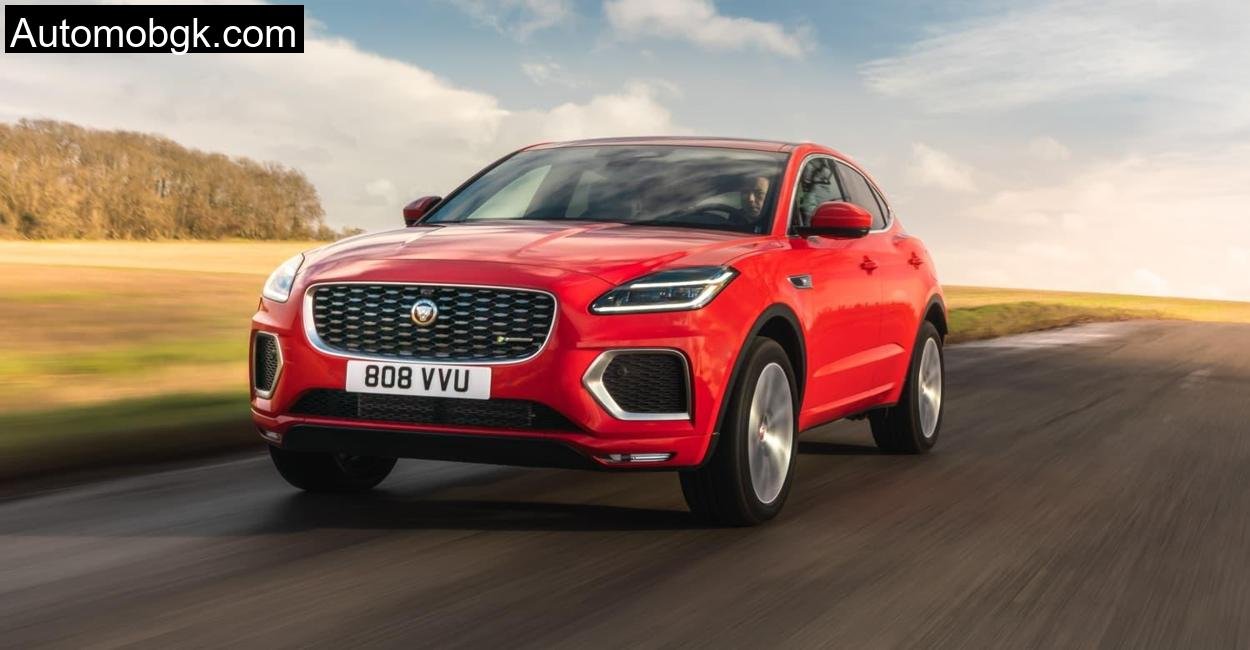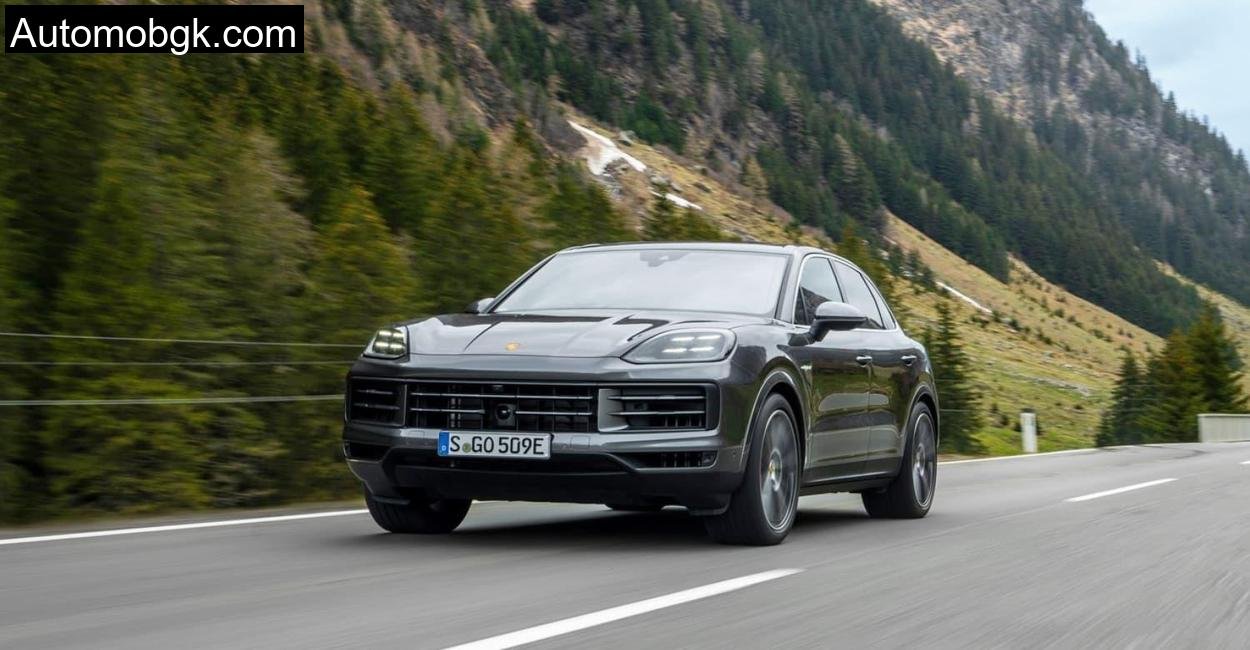The Murrhardt Forest, with its undulating terrain, tight corners, and occasional stretches of punchy elevation changes, is the perfect setting to push a car like this to its limits. And push it I did.
Jaguar E-Pace: The engines
Pop the hood, or rather, slide behind the wheel, and you’ll find a quietly complex system powering this compact SUV. My test vehicle, the P300e, is the most advanced version of the E-Pace: a plug-in hybrid that marries a 1.5-liter three-cylinder petrol engine to a powerful electric motor. Together, they generate 309 horsepower and a healthy 540 Nm of torque. That’s a lot of muscle packed into a 4.4-meter body.
The petrol engine is no slouch, especially considering it only has three cylinders. Jaguar’s engineers managed to wring out 227 kW of total system power, delivering a solid punch of acceleration right from a standstill. It’s the electric motor that does the early lifting, launching you with silent authority off the line. Once past 60 km/h, the petrol unit kicks in with a subtle growl, taking over without much drama.
From Murrhardt’s forested trails to open B29 stretches near Backnang, I switched drive modes like a conductor choosing his tempo. EV mode was perfect through the village, quiet, clean, and efficient. Once we hit the countryside, Dynamic mode gave me the sharp throttle response and stiffened suspension needed to have some real fun. The plug-in system feels best when both powerplants work in harmony; quick overtakes felt seamless and assured, with no sign of hesitation underfoot.
But like all plug-in hybrids, your experience hinges on how often you charge it. That claimed 1.6 liters/100 km economy figure is possible, but only with regular plug-ins. Otherwise, you’re lugging around battery weight without making use of its benefits.
The compact SUV is not a lightweight
No hiding it, this Jaguar is heavy. At just over 2.17 tonnes unladen, you’d expect sluggish turns, lazy acceleration, or at least a bit of body roll on sharp bends.
But Jaguar has pulled off something clever.
The E-Pace P300e dances around corners with surprising agility. On the sharper turns near Vorderbüchelberg, it didn’t lean like I feared it would. Instead, the chassis stayed planted and predictable. The electric motor over the rear axle adds that crucial torque vectoring, helping the E-Pace rotate more sharply through corners than most SUVs in its class.
Acceleration is crisp. In fact, it hits 100 km/h in 6.5 seconds. But it’s not the outright pace that impresses, it’s how calmly it does it. There’s no mad rush, no torque steer or frantic noise. It just goes. Effortlessly.
The eight-speed automatic transmission is smooth most of the time, but under hard acceleration, you can feel it hesitating, like it’s asking the engine and motor who should take the lead. These slight interruptions aren’t deal-breakers, but they’re there.
The P300e’s weight does make its presence known in tighter corners, and the suspension is definitely tuned more towards sport than comfort. Over sharper road joints, like those near Sulzbach an der Murr, you’ll feel a bit of a thump. But it never feels harsh or cheap. Just focused.
Easier to reach the (operating) goal

Inside the E-Pace, you’ll find Jaguar’s latest iteration of their infotainment setup, and it’s a massive step up from earlier versions.
The wide, ultra-sharp touchscreen in the center stack responds quickly to inputs, and the navigation system finally feels intuitive. It even remembered a few routes I’d taken the day before and offered shortcuts as I pulled out from my hotel near Murrhardt.
Physical controls are still present for climate functions, something I appreciated during spirited driving. You don’t want to be prodding a screen when your hands should be on the wheel.
The new digital instrument cluster is crisp and configurable. I had it set to display real-time energy flow between the engine, battery, and wheels, watching it shift from EV-only to hybrid and back was oddly satisfying.
There’s also a head-up display projecting speed, nav instructions, and even gear selection, perfect when you’re focused on the road ahead. The dashboard, trimmed in stitched leather, feels premium. Not gimmicky. It reminds you that while Jaguar’s aiming for younger buyers, they haven’t forgotten their roots in craftsmanship.
Enough space – even in the back

It’s easy to forget that this is Jaguar’s smallest SUV, measuring just 4.4 meters in length. But somehow, they’ve carved out a surprisingly roomy interior.
I’m just under six feet tall, and in the rear seat, I still had a couple of inches of headroom and plenty of knee space behind my own driving position. Three adults across the back might feel tight, but for two passengers, it’s perfectly comfortable, even on longer hauls.
The boot, at 494 liters, isn’t class-leading, but the floor is flat and the loading lip low, which made it easier to haul in my camera gear and drone case. Fold the rear seats and you get up to 1,170 liters, useful, though still shy of what Jaguar originally promised.
For a compact SUV, this level of practicality is impressive. It doesn’t feel cramped, and Jaguar didn’t sacrifice rear space for the sake of sleek styling, a trap many others fall into.
Technical Specifications
| Specification | Details |
| Model | Jaguar E-Pace P300e R-Dynamic S AWD |
| Engine Type | Plug-in Hybrid |
| Combustion Engine Displacement | 1,498 cc |
| System Power (kW / hp) | 227 kW / 309 hp |
| System Torque | 540 Nm |
| Transmission | 8-speed automatic |
| Drive Type | All-wheel drive (AWD) |
| 0–100 km/h Acceleration | 6.5 seconds |
| Top Speed | 216 km/h |
| Electric Range (WLTP) | 58 km |
| Combined CO2 Emissions (WLTP) | 35 g/km |
| Fuel Consumption (WLTP) | 1.6 l/100 km |
| Power Consumption (WLTP) | 20.0 kWh/100 km |
| Battery Capacity (Gross/Net) | 15.5 / 11.6 kWh |
| Charging Power | AC: 2.3–22.0 kW, DC: 32.0 kW |
| Boot Space (Seats Up / Down) | 494 / 1,170 liters |
| Empty Weight | 2,173 kg |
| Towing Capacity (Braked/Unbraked) | 1,600 kg / 750 kg |
| Dimensions (L x W x H) | 4,395 x 1,984 x 1,648 mm |
| Base Price (Germany) | €61,300 |
Conclusion
The Jaguar E-Pace P300e is a car that defies first impressions. Yes, it’s compact and yes, it’s expensive, especially for something that started life with a three-cylinder engine. But drive it, live with it for a few days, and it begins to reveal its layers.
It’s not perfect. The gearbox coordination could be slicker, and the real-world electric range is modest. But the ride, the handling, and the premium feel more than make up for it.
In the wild contours of the Murrhardt Forest, it felt alive. Controlled. Confident.
And maybe that’s the best compliment you can give a compact SUV, it didn’t feel like a compromise. It felt like a Jaguar.
Is the Jaguar E-Pace P300e worth it compared to the petrol-only versions?
If you have a reliable charging setup and want to reduce running costs, absolutely. The P300e gives you the performance edge and electric-only driving in city traffic.
How comfortable is the Jaguar E-Pace for long-distance travel?
Yes. Despite its size, it’s practical for daily family duties with good rear space and enough boot capacity for most needs.
Can the E-Pace be a family car?
Yes. Despite its size, it’s practical for daily family duties with good rear space and enough boot capacity for most needs.







